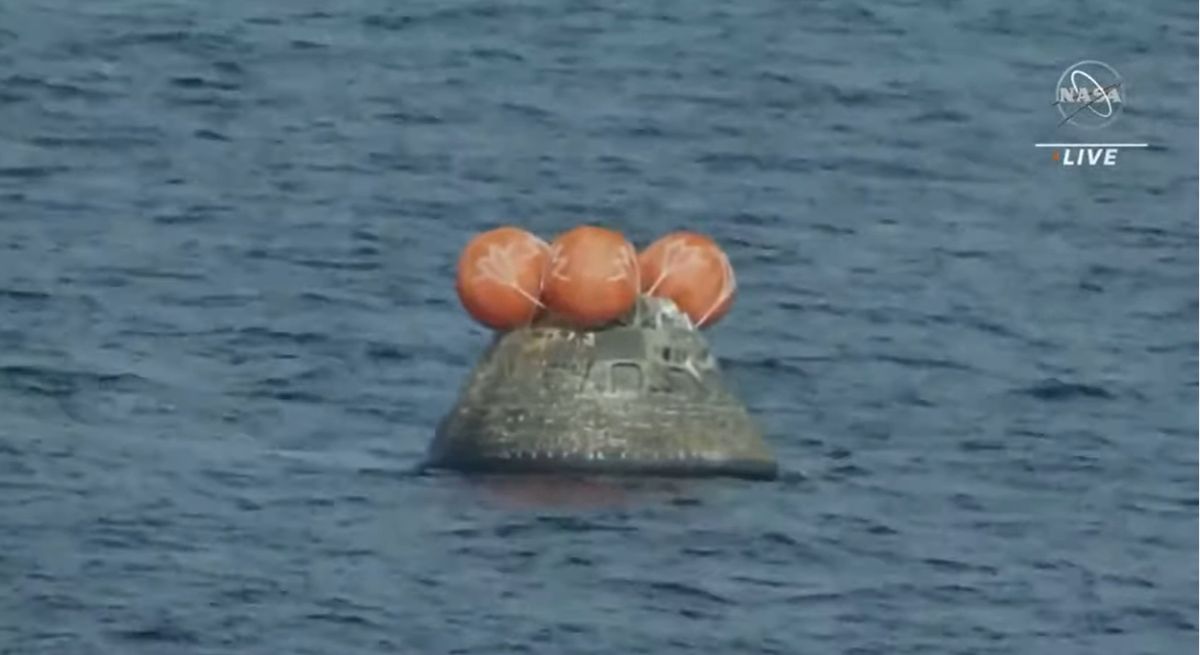Here is a list of Kennedy Space Center’s top 22 events in 2022.
Read MoreMonth: December 2022
Gemini-VII and Gemini-VI-A Meet at Last
In this photo from Dec. 15, 1965, the Gemini-VII spacecraft is seen from the Gemini-VI-A spacecraft during their rendezvous mission in space.
Read MoreNASA’s Big 2022: Historic Moon Mission, Webb Telescope Images, More
2022 is one for the history books as NASA caps off another astronomical year.
Read MoreUS Air Force launches 1st operational hypersonic missile
The United States Air Force (USAF) has successfully tested its first prototype hypersonic missile. The service’s new AGM-183A Air-launched Rapid Response Weapon, or ARRW (“Arrow”) is expected to be the United States military‘s first hypersonic weapon to reach operational status. The exact speed of the AGM-183A isn’t known, although the Lockheed Martin-designed weapon is said to be based on previous test vehicles built by DARPA (opens in new tab) that have an alleged maximum speed of Mach 20, or 15,000 mph (24,000 kph). The successful ARRW test was conducted on…
Read MoreSupernova algorithm classifies 1,000 dying stars without error
Astronomers from the California Institute of Technology (Caltech) have used a machine algorithm to classify 1,000 supernovas caused by exploding dying stars. The algorithm, named SNIascore, created the catalog from data collected by the Zwicky Transient Facility (ZTF), a sky survey instrument attached to the Samuel Oschin Telescope located at Caltech’s Palomar Observatory. Scanning the night sky for short-lived or transient events that can include everything from racing asteroids to feeding black holes and supernovas, ZTF generates a relentless amount of data each night. So much so that ZTF team…
Read MorePesky ‘leap second’ will be abolished by 2035
Time is up for the leap second. Last week, an international coalition of scientists and government agencies voted to retire the dated timekeeping system, which will officially end in 2035. The decision was made Nov. 18 during a general conference in France held by the International Bureau of Weights and Measures (BIPM), the organization responsible for global timekeeping. Similar to leap years, leap seconds are a measure of time that get added periodically to clocks to make up for the difference between astronomical time (Universal Time 1, or UT1), also…
Read MoreOrion Comes Home to Earth
At 12:40 p.m. EST, Dec. 11, 2022, the Orion spacecraft for the Artemis I mission splashed down in the Pacific Ocean after a 25.5-day mission to the Moon.
Read MoreNASA is over the moon with success of Artemis 1 Orion test flight
NASA couldn’t be happier with how its Artemis 1 moon mission went. Artemis 1 wrapped up Sunday afternoon (Dec. 11) with the successful splashdown of an uncrewed Orion capsule in the Pacific Ocean about 100 miles (160 kilometers) off the coast of Baja California. Though a considerable amount of postflight analysis remains, NASA already views the 25.5-day-long Artemis 1 as a rousing success. “I don’t think any one of us could have imagined a mission this successful,” Artemis 1 mission manager Mike Sarafin said during a post-splashdown briefing on Sunday.…
Read MoreVP Kamala Harris hails NASA Artemis 1 Orion spacecraft’s splashdown success
The White House has congratulated NASA on the success of its epic moon mission. U.S. Vice President Kamala Harris, who also chairs the National Space Council, praised the agency and its partners for their work on the successful Artemis 1 mission to the moon , which splashed down on Sunday afternoon (Dec. 11). “I applaud the team for their work on completing a successful Artemis 1 mission. We’re one step closer to returning astronauts to the moon,” Harris wrote in a tweet (opens in new tab) on Sunday. The Orion…
Read MoreBehold! This is the last view of Earth from space from NASA’s Artemis 1 Orion (video)
To paraphrase a famous space movie, Earth was getting awfully big in the window of NASA’s last moon mission as it streaked towards our planet. The Orion spacecraft ferried home epic live video of our home planet during the last hours of Artemis 1 during steering for splashdown today (Dec. 11). The uncrewed mission was a shakedown cruise to prove the Artemis program is ready for humans, and Artemis 1 indeed clicked through all major milestones: a launch of the untested Space Launch System, orbiting the moon and surviving a…
Read More
